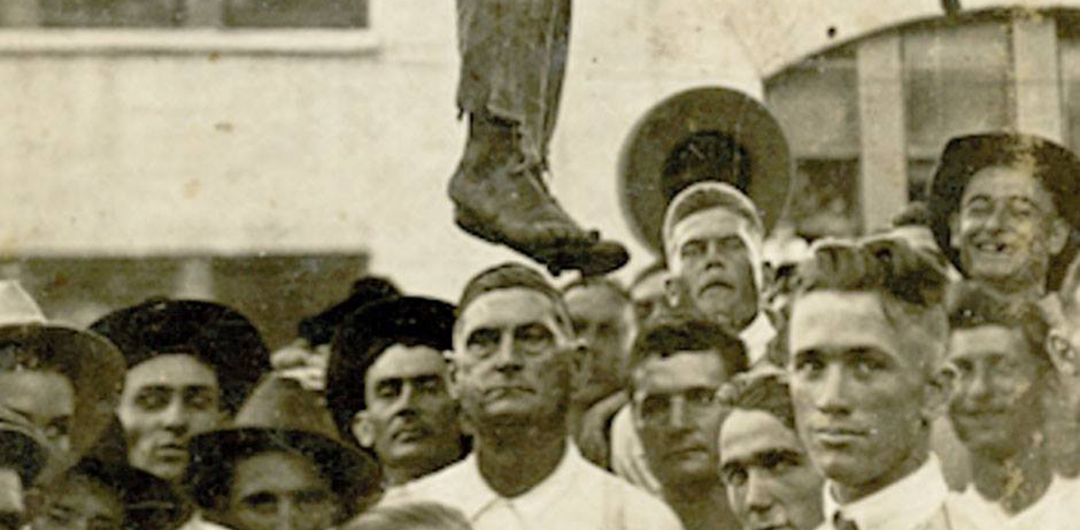When Supreme Court Justice William O. Douglas travelled to India in 1950 the very first question he was asked by the Indian press was, “Why does America tolerate the lynching of Negroes?”
1950 was the height of the Cold War.
The United States of America and the Soviet Union were competing against one another for political, social and economic influence over the rest of the world.
Think of it like colleges or universities, and their recruiting battles for the top high school athletes around the country.
The different countries around the world were Blue chip high school athletes and both the United States and the Soviet Union were telling them how blue the skies would be if they agreed to come to their school of thought.
America was trying to sell itself to the world as the beacon of light for democracy and freedom, that America, and Americans for that matter, were “exceptional” (American Exceptionalism) and that if newly emerging countries followed the lead of the US, they could be exceptional too.
But the images of white police officers turning water hoses on peaceful protesters, turning police dogs on schoolchildren, antagonizing and assaulting people for just sitting at lunch counters was drowning out the narrative we were trying to sell to the world about liberty and freedom.
When the President of the United States has to send in the National Guard to integrate a high school because the state’s governor Orval Faubus refuses to let them in the school, who’s free?
And worst of all, America’s morbid tradition of lynching black men, women and even children and then leaving their corpses in trees for days afterward to rot under the brutal southern sun was making the United States as effective selling themselves as the “beacon of freedom” as a wheezing emphysema patient would be selling unfiltered cigarettes.
This wasn’t just “our dirty little secret” as badly as some wanted it to be.
It might’ve been 1950 instead of 1850 but how White Americans thought of Black Americans hadn’t changed much since John Brown complained about the South’s use of the term “peculiar institution” in reference to slavery. The purpose then was to say to the North as long as slavery remained in the South it was none of their business. In 1950, American Conservatives wanted the rest of the world to mind their business with the ways and means they treated their Negroes.
But in 1950 the world had television, moving images to sell the story of the treatment of Black Americans. In 1850, most Americans had never even seen a living, breathing Black American so the South could offer their own “alternative facts” to how slaves were being treated. Very few had actually seen the “stripes” on the backs of fugitive slaves as a counterpoint.
Things were different today.
When the rest of the world sees policemen turning high-powered water hoses on children they react to that inhumanity.
The world had seen the lynchings.
They knew that the death toll of lynching black men, women and children was in the thousands.
The world knew that Congress could never get any anti-lynching legislation through both chambers to the President’s desk because Conservatives had constituents that they represented that wouldn’t appreciate any aspect of their “way of life” being criminalized.
So when the Indian press asked, “why does America tolerate the lynching of Negroes?” it struck right at the heart of who we were, not who we wanted to appear to be.
But this has been a question that people had been asking of Americans since before the American Revolution.
John Jay, one of our founding fathers said in 1775 that, “To contend for liberty and to deny that blessing to others involves an inconsistency not to be excused.”
It was 1950, 175 years after John Jay wrote those words, and what had changed?
America was still branding itself as the beacon of freedom based entirely on the freedom White Americans enjoyed instead of the freedom all Americans enjoyed.
And make no mistake about it, the Soviet Union made sure that everyone in the world knew how the freest country in the world, the beacon of democracy, treated its Black citizens.
Justice William O. Douglas later wrote after returning to the states, “the attitude of the United States toward its colored minorities is a powerful factor in our relations with India.”
Supreme Court Chief Justice Earl Warren, four years later, said in a speech to the American Bar Association “Our American system like all others is on trial both at home and abroad. The extent to which we maintain the spirit of our constitution with its Bill of Rights, will in the long run do more to make it both secure and the object of adulation than the number of hydrogen bombs we stockpile.”
In other words, to win this Cold War with the Soviet Union, America would have to deal with the issue of White supremacy head on.
Legalized racial segregation was leaving deep bruises on America’s international image and was playing right into the hands of the Soviets.
As a post-World War II Europe began to lose its grip over its colonies the world over and colonialism was coming to an abrupt end, the question was which direction would these new countries go, with democracy, capitalism and free markets or with communism and a more state controlled economy?
In the 1950s and 1960s Martin Luther King Jr. and other civil rights leaders were often accused by conservatives of being Communists. They looked at Civil Rights leaders eerily similarly to the way slave owners looked at their slaves as they abandoned them at the end of the Civil War.
In the closing weeks of the Civil War slave owners quickly came to deeply resent their slaves, feeling as if their “people” (slaves) had betrayed them –with treason.
Slave owners, particularly at the end of the Civil War, often wrote of their slaves as being “without loyalty or conscience” for pursuing their own interests (freedom) instead of putting the interest of their masters far ahead of their own.
The fact that that civil rights leaders would continue to bring the issue of civil rights to the forefront of national and international news, knowing full well that doing so was working in favor of the interests of the Soviet Union was again, viewed as treasonous.
No matter what they did to Black Americans; discriminate against them, lynch them, segregate them, deny them their constitutional rights, there were those Americans that expected Blacks to act in their interest, just like the slaveholders truly expected their slaves to be loyal to them, even up to the bitter end of the American Civil War.
And even in the 1950s, they were still asking Black civil rights leaders to again, put their own freedom second to the interests of helping White America portraying themselves to the world as this beacon of freedom.
So make no mistake about it, although the vast majority of civil rights activist were not communists, although some were, they were all aware of Cold War and how their struggle for their own civil rights influenced how the rest of the world viewed the United States.
And they used it to their full advantage.
Let’s see if it worked.

